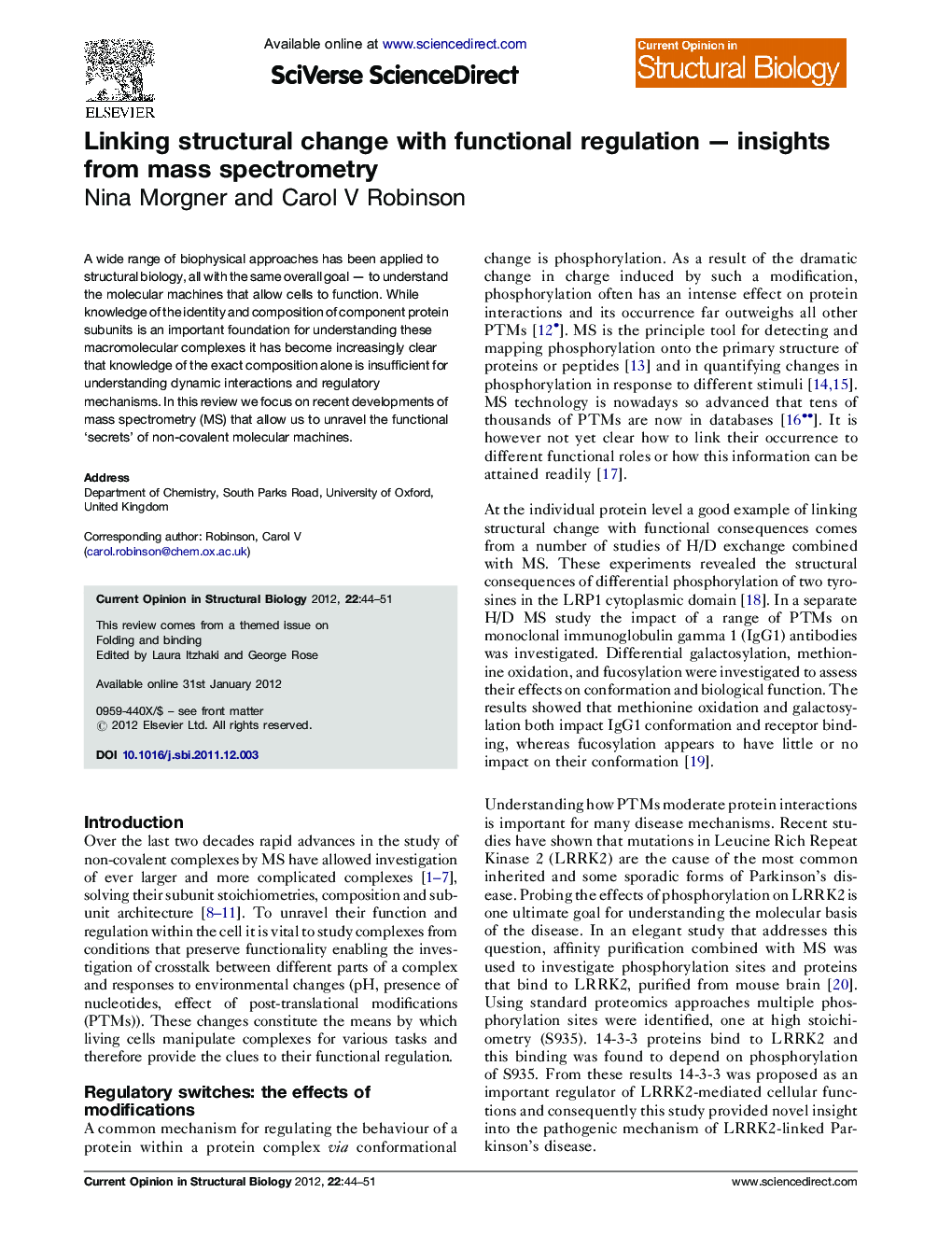| Article ID | Journal | Published Year | Pages | File Type |
|---|---|---|---|---|
| 1979215 | Current Opinion in Structural Biology | 2012 | 8 Pages |
A wide range of biophysical approaches has been applied to structural biology, all with the same overall goal — to understand the molecular machines that allow cells to function. While knowledge of the identity and composition of component protein subunits is an important foundation for understanding these macromolecular complexes it has become increasingly clear that knowledge of the exact composition alone is insufficient for understanding dynamic interactions and regulatory mechanisms. In this review we focus on recent developments of mass spectrometry (MS) that allow us to unravel the functional ‘secrets’ of non-covalent molecular machines.
► Mass spectrometry goes beyond determination of mass and subunit stoichiometry into function. ► MS of intact complexes reveals effects of post-translational modifications on subunit interfaces. ► Trapping intermediates along assembly pathways yields information about subunit packing. ► Calculation of KD values from multiple spectra in a reaction cycle predicts functional complexes.
